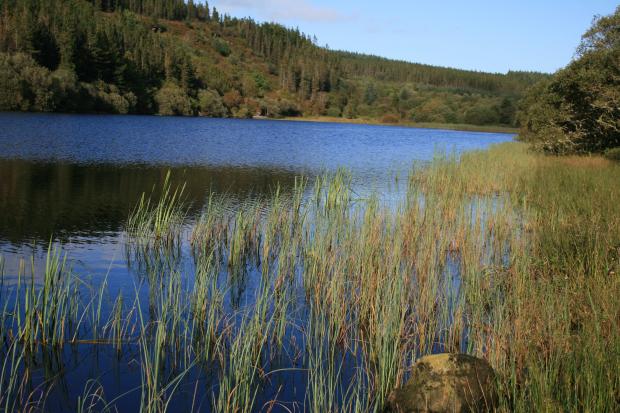
Lough Navar Scarps and Lakes has been declared as an ASSI for its scarps, heathland, blanket bog, grassland, lake and upland fen habitats, which together support a range of important plant and animal communities. These include a large number of rare and notable species.
The area is largely located within Lough Navar Forest and consists of a number of north-facing sandstone scarp ridges with unplanted Heather covered slopes and open water bodies. The top of the scarps consist of exposed cliff and rock faces grading into block boulder scree below. These inhospitable shaded rock faces support a rich fern community, including Sea Spleenwort and Tunbridge Filmy-fern.
The slopes beneath the scarps are covered by a dry heath community and is the main location for a number of rare species including Serrated Wintergreen and Common Wintergreen.
Trees and scrub have developed on some of these slopes forming a low canopy of Rowan, Downy Birch, Goat Willow, Hazel and occasional Sessile Oak. The clean moist air in this region has allowed the development of rich moss, liverwort and lichen communities including the notable Tree Lungwort.
On the gentler, unplanted slopes, wet heath forms a mosaic with blanket bog on deeper peat. Where the peat surface thins, adjacent to lakes and on the lower slopes, heathland is replaced by species rich wet grasslands with a short sedge sward and characteristic species such as Purple Moor-grass, Meadow Thistle and Devil’s-bit Scabious. The latter is the only larval food plant of the rare Marsh Fritillary Butterfly which breeds in a number of suitable areas across the site.
Lakes and ponds across the area are generally nutrient poor and are characterised by the aquatic feathery Bog-moss with localised pockets of acid fen dominated by Bottle Sedge and Bog Sedge around the periphery.
The larger lakes have shallow margins and a stony substrate and represent some of the best examples of unpolluted lakes in Northern Ireland. The distinctive plants found in these clear waters with low levels of plant nutrients include Shoreweed, Quillwort and abundant Water Lobelia with submerged species such as Greater Water-moss and Lesser Stonewort. These wetlands include a number of notable animals including the Irish Damselfly and the White-clawed Crayfish.
Related articles
- ASSI Guidance for Public Bodies/Competent Authorities
- Coastal Areas of Special Scientific Interest
- Conservation Management Plans (CMPs)
- European Marine Sites - Marine Special Areas of Conservation and Special Protection Areas
- Introduction to Conservation Management Plans (CMPs) for Northern Ireland’s Special Areas of Conservation
- Marine Conservation Zones
- Marine Protected Areas
- Marine Ramsar sites
- Portrush Coastal Zone
- Special Areas of Conservation
- Special Areas of Conservation for Harbour porpoise
- Special Protection Areas
